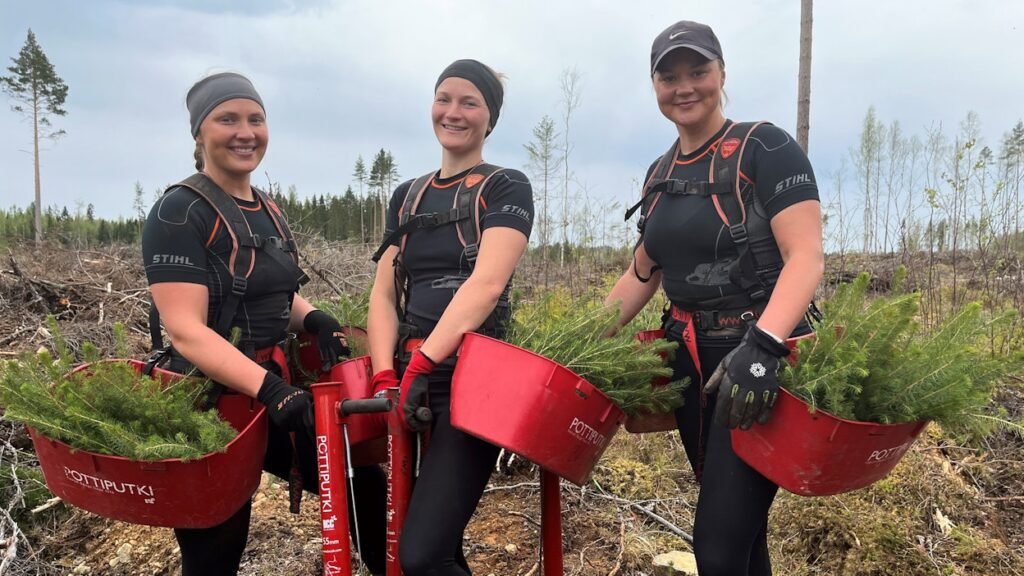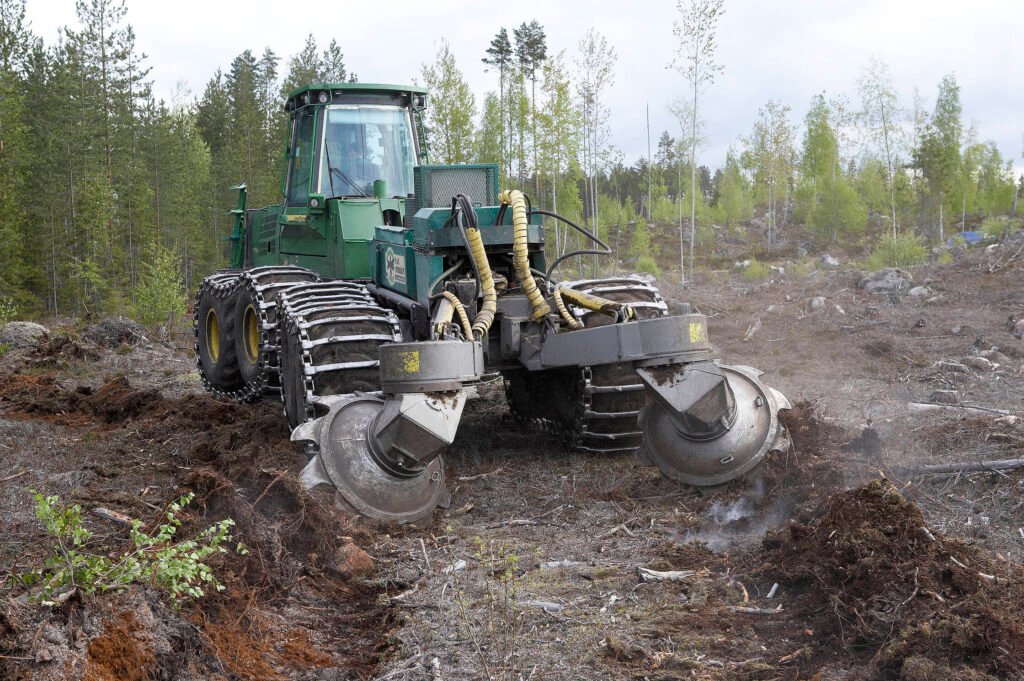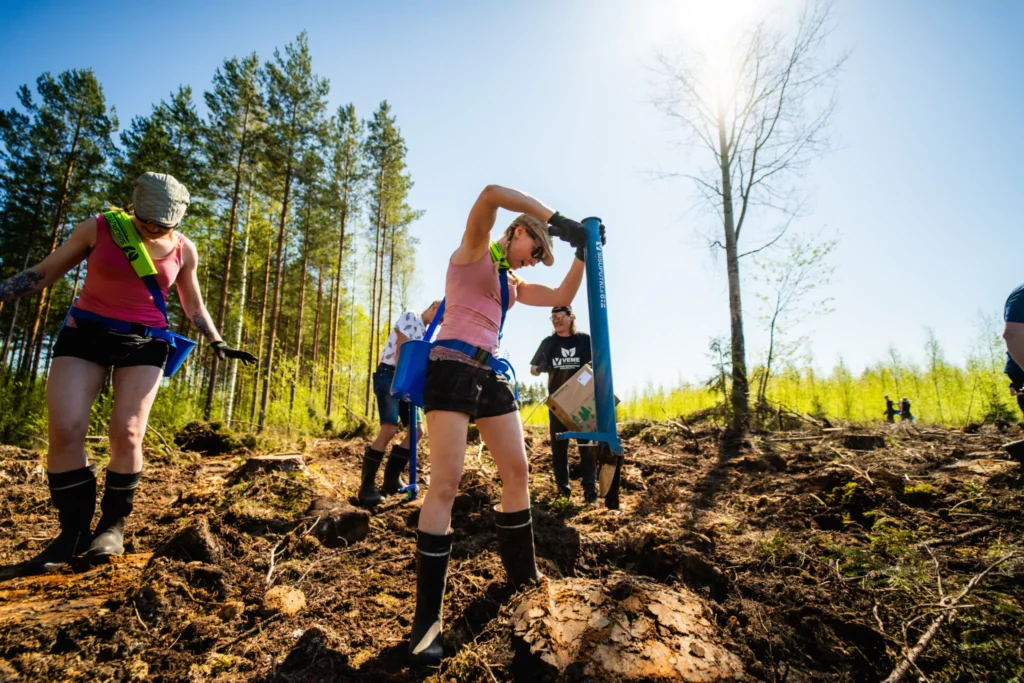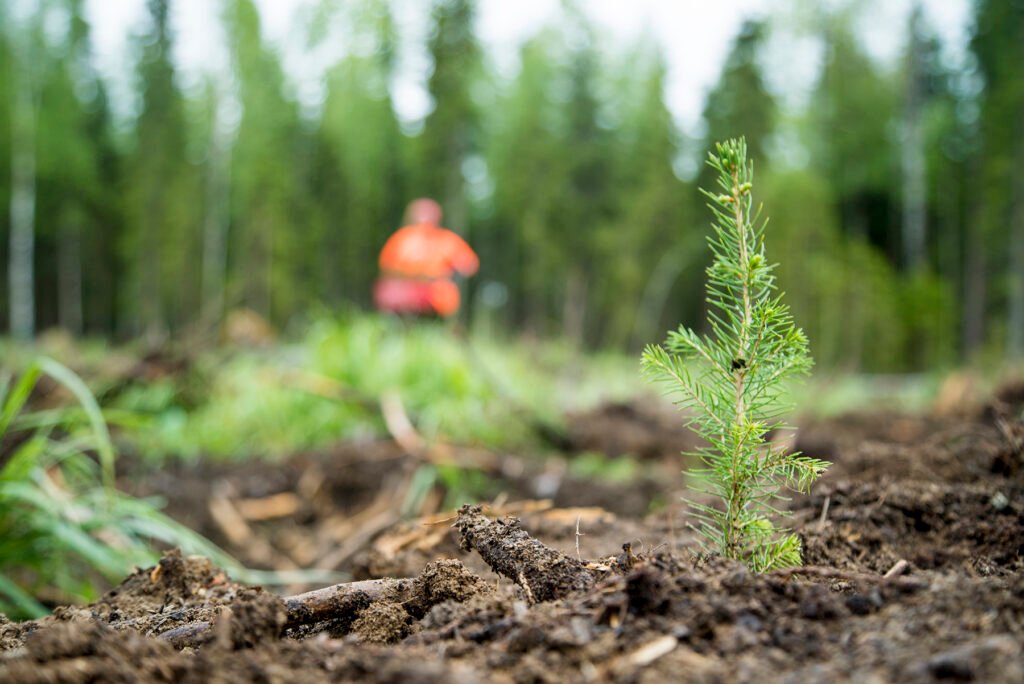
After final fellings (regeneration fellings), areas larger than 0.3 hectares create a regeneration obligation for the forest owner. Regeneration can be carried out either naturally or by planting.
There is no regeneration obligation on areas where an originally open or sparsely wooded mire or a traditional biotope is being restored and regeneration felling is carried out at the same time. The Finnish Forest Centre or another authority approves the restoration plan.
The following steps are carried out on the regeneration area as needed:
Clearing of the regeneration area
It is recommended to clear non-viable undergrowth and all other small trees that hinder subsequent measures and the growth of seedlings from the regeneration area.
Soil preparation

Successful regeneration requires a soil preparation method chosen on the basis of the site and the regeneration method. The soil preparation method is selected according to the site, tree species and soil type.
Soil preparation improves the competitive position of seedlings against other vegetation and protects them, for example, from pine weevil damage. In addition, the surface layer of the soil warms up, which promotes root development. Soil preparation should produce enough germination or planting spots to achieve the target stand density.
Soil preparation should not be done unnecessarily intensively. Soil-exposing methods such as scarification and patch scarification are suitable only for coarse and medium-textured, permeable soils.
In mound-forming soil preparation methods, the aim is to carry out the preparation so that the humus layer remains under the mound. This breaks the capillary rise of water between the mound and the soil beneath it. Seedlings are planted in the centre of the mound deep enough for their roots to reach the humus layer beneath the mound.
On wet sites, soil preparation can also be carried out as furrow or ditch mounding, where water is directed away from the area and the ground is dried.
Planting / natural regeneration

By natural regeneration, pine or silver birch seedlings arise from the seeds of seed trees left on the regeneration area or from surrounding stands. Natural regeneration suits pine on poor and dry sites where the ground vegetation does not hinder seedling development. Natural regeneration of spruce requires good seedling establishment before the actual regeneration felling throughout Finland. Natural regeneration is often slower and results in a stand with more uneven density than planting.
The forest can be regenerated by sowing or planting. Planting is suitable for regenerating all tree species.
The recommended planting density varies by species and is generally about 1 600–2 500 seedlings per hectare. Sowing is usually done mechanically in connection with scarification or patch scarification to be cost-effective. Planting is carried out either in early summer before Midsummer so that seedlings have time to root during the summer, or in autumn before the ground freezes.
In planting, high-quality and genetically improved seeds or seedlings can be used, thus obtaining the benefits of forest tree breeding. Planting is also a good choice in stands with abundant root rot or butt rot, because depending on the site it allows changing the main tree species or adjusting the number of seedlings. It is advisable, when establishing a new stand, to plant a sufficient number of seedlings and/or sow enough seed, because damage caused by nature or animals can create a patchy, poorly growing and underproductive stand, which may then require supplementary planting or, in the worst case, re-regeneration.
Monitoring and securing new growth

After regeneration, it is advisable to monitor seedling establishment and initial growth. Grass control is often necessary on fertile sites – fresh mineral soils and more fertile sites. Nutrient-rich peatlands and fertile swamps also grass over easily. Grass control is usually done mechanically by trampling or cutting the competing vegetation around seedlings. Grass can also be controlled with various chemical agents.
The regeneration obligation is considered fulfilled when, depending on the geographical location of the area, a seedling stand has been established within 10–25 years from the end of the timber harvesting that created the obligation.
A seedling stand is considered established when it is sufficiently dense, the seedlings are evenly distributed, their average height is 0.5 metres, and their development is not immediately threatened by other vegetation.